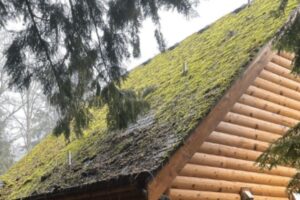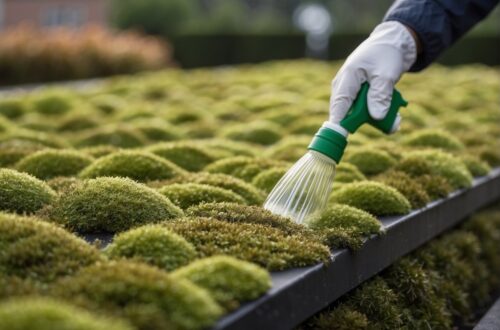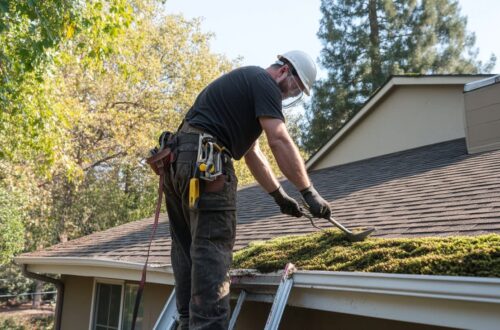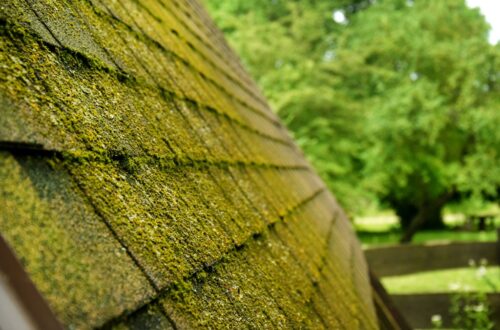Moss growth on a roof can be a major concern for homeowners, leading to potential damage and costly repairs. Over time, moss retains moisture, which can weaken shingles and contribute to leaks. However, when it comes to removing moss, there are many myths and misconceptions that can lead to ineffective or even harmful solutions. In this article, we will debunk some of the most common myths about roof moss removal and provide clarity on the best ways to maintain a moss-free roof.
Myth 1: Moss Adds Character to Your Roof and Is Harmless
One of the most widespread myths is that moss growth on a roof is merely a cosmetic issue. While some people may find moss-covered roofs charming or reminiscent of old cottages, the reality is that moss can cause significant structural damage over time. Moss thrives in damp environments and holds moisture against the roofing material, leading to premature deterioration. In regions with heavy rainfall, moss can accelerate the breakdown of shingles, making the roof more susceptible to leaks and decay.
Myth 2: Pressure Washing Is the Best Way to Remove Moss
Many homeowners believe that pressure washing is the quickest and most effective way to remove moss from a roof. While pressure washing can indeed remove moss, it often does more harm than good. The high pressure can strip away protective granules from asphalt shingles, reducing their lifespan and exposing the roof to further damage. Additionally, aggressive pressure washing can force water underneath shingles, leading to leaks and water damage inside the home. A gentler, more effective approach involves using specialized moss removal treatments followed by a careful brushing or rinsing process.
Myth 3: Bleach or Vinegar Is a Safe and Effective Moss Killer
 Household cleaning solutions such as bleach and vinegar are often suggested as easy DIY methods for moss removal. While these substances may kill moss temporarily, they come with significant risks. Bleach, for example, can cause discoloration and deterioration of shingles, weakening their protective qualities. It can also harm surrounding plants and grass when it runs off the roof. Vinegar, while less harsh, is also not a reliable long-term solution and may not penetrate deep enough to prevent regrowth. Instead, it is better to use a moss-specific treatment designed for roof applications, ensuring both effectiveness and safety.
Household cleaning solutions such as bleach and vinegar are often suggested as easy DIY methods for moss removal. While these substances may kill moss temporarily, they come with significant risks. Bleach, for example, can cause discoloration and deterioration of shingles, weakening their protective qualities. It can also harm surrounding plants and grass when it runs off the roof. Vinegar, while less harsh, is also not a reliable long-term solution and may not penetrate deep enough to prevent regrowth. Instead, it is better to use a moss-specific treatment designed for roof applications, ensuring both effectiveness and safety.
Myth 4: Moss Will Not Return Once Removed
A common misconception is that once moss is removed, the problem is permanently solved. Unfortunately, moss spores are airborne and can quickly return if the conditions that allowed them to grow in the first place are not addressed. Factors such as shade, excess moisture, and poor drainage contribute to moss growth, and unless these are mitigated, moss will likely return. To prevent future growth, homeowners should trim overhanging branches to allow more sunlight onto the roof, keep gutters clean to improve drainage, and consider installing zinc or copper strips along the roof ridge to create a moss-resistant surface.
Myth 5: Any Roof Cleaner Will Work for Moss Removal
Not all roof cleaning products are suitable for moss removal, and some can even cause more harm than good. Certain harsh chemical cleaners can damage roofing materials, shorten the lifespan of shingles, and pose environmental hazards. It is crucial to use a product specifically designed for moss removal, ideally one that is biodegradable and safe for surrounding plants and animals. Consulting with a professional or checking manufacturer recommendations can help ensure that the chosen cleaner is both effective and safe for long-term roof health.
Myth 6: Moss Removal Is a One-Time Task
Many homeowners assume that moss removal is a one-and-done task, but proper roof maintenance is an ongoing process. Even after moss is removed, regular roof inspections and maintenance are necessary to prevent its return. Seasonal cleaning, particularly in damp or shaded areas, can help keep moss at bay. Additionally, applying a protective treatment or installing preventive measures, such as zinc or copper strips, can significantly reduce the likelihood of regrowth. Proactive maintenance is key to extending the lifespan of a roof and avoiding costly repairs down the line.
Myth 7: DIY Methods Are Just as Effective as Professional Services
While some DIY methods can be effective for minor moss problems, professional roof cleaning services often provide a more thorough and long-lasting solution. Professionals have access to specialized equipment, eco-friendly treatments, and expertise that ensure safe and efficient moss removal without damaging the roof. Additionally, professional services can identify underlying issues, such as poor drainage or structural weaknesses, that may contribute to moss growth. For homeowners concerned about long-term roof health, investing in professional moss removal and maintenance is often the best course of action.






